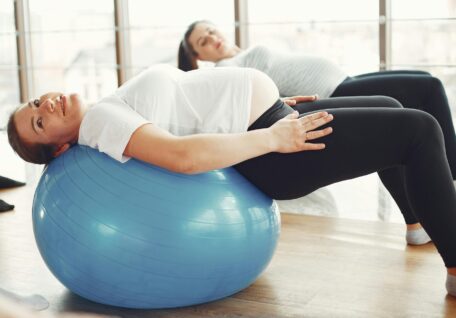Considerations when training the elderly
The number of individuals aged 65 years and over is the fastest growing segment of our population. Recent ABS figures show that between 1990 and 2010 the medium age rose by 4.8 years with the total population aged over 65 years increasing by 2.4% in the same period. These rates are projected to continue, and increase.
As a Fitness Professional, this means that an ever-increasing portion of your clientele are likely to come from an older demographic, bringing a unique set of training considerations that you need to be aware of. It’s vital as a Personal Trainer that you have an awareness (and understanding) of the importance of physical activity for the older population. Strictly speaking there is a need to determine the extent to which habitual exercise and physical activity can improve health, functional capacity, quality of life and independence in this population.
As with training anyone, the basis for programming lies in your client’s personal goals, i.e. what he or she wants, coupled with the physiological and biomechanical requirements and considerations.
Two major contributors that can determine a program’s success are past exercise experience and goal setting; both of which you should be discussing with your client prior to beginning a program. An effective exercise plan for older adults should not only be comprehensive and address functional needs, but obviously also needs to be enjoyable, specific, realistic and safe.
“Don’t make the mistake of assuming your client’s age will dictate exactly how they need to be trained. There are many over 60’s who have exercised their entire life and are physically fitter than those half their age.”
With that noted, the considerations in this article are focussed on those who do not have a lifelong history of training and are quite frail. An exercise program designed for frail individuals should reflect both your clients’ medical and social needs, and contact with your clients other health care professionals as part of a managed care plan is essential.
The primary goal for the frail is to increase functional capacity and independence; therefore careful attention must be paid when choosing modes of activity. You should choose exercises that activate large muscle groups and supply functional benefits such as walking, cycling, rowing and swimming. Performing aerobic physical activity 3-5 days per week and eventually working towards 60 minutes of activity on these days, whether by continuous activity or in small bouts, should be a goal for your clients. During these activities reaching target heart rate should not necessarily be the main focus of aerobic activity, instead try using RPE and the talk test to measure intensity levels.
Adding strength training to the program will help increase overall muscular strength, decrease the risk of falling, and increase hand strength to assist with activities of daily living. It is suggested for frail individuals to start a strength training program without any weights and slowly progress from there. It should be a goal to incorporate 3 days of strength training per week with the sessions lasting 20 minutes. As with any other populations, flexibility training should be incorporated most days of the week.
It is also suggested that a comprehensive exercise program for frail older adults incorporate neuromuscular activities to increase gait, coordination, balance, flexibility, prevent falls, and increase hand-eye coordination and reaction times. Some of these activities can include one-foot stand, stair climbing, balloon activities, chair stand exercises, as well as practicing falling techniques.
Your clients will notice the difference! Individuals who have been inactive for most of their life can benefit tremendously physically, emotionally and mentally from incorporating light to moderate exercise programs into their daily routine. Regular exercise performed at a low to moderate intensity is also associated with improvements in traditional as well as emerging risk factors associated with cardiovascular disease. It truly can be a lifesaver!
While older clients may have a few more functional limitations to consider when training, this is absolutely no excuse to relegate them to solely cardio machines. Get them up, moving and training hard. Respect their individual limitations, keep it safe, but focus on what they can do, not on what they can’t!
Article written by Claire Knoop, Student Support Officer at Australian Fitness Academy.
Claire’s studies in sport science have given her a comprehensive education in anatomy, kinesiology, management concepts in sport, fitness assessment and prescription and athletic training, this knowledge has enhanced her desire for health and fitness, leaving her with a passion to lead by example and teach others who are starting out in the fitness industry. Claire believes those that teach fitness should remain current in the industry to ensure they are at the forefront of industry practice and trends.
If you are looking to improve your ability to train the elderly we offer a workshop in exercise for older adults.










